What is the hallmark of exceptional customer experience?
Businesses often use cookie-cutter approaches to improve customer journeys on their channels. However, this rabbit hole goes deeper than that. It branches out non-linearly into various aspects that a business must consider to enhance its customer experience truly.
In the words of Stan Phelps, “Customer experience isn’t an expense. Managing customer experience bolsters your brand.”
Customer experience is more than designing personalized apps and websites. It is about creating memorable participation and engagement that fosters a positive relationship with the customer.
One way to achieve this is by using a customer experience platform that helps you provide immersive brand experiences for your customers. Let’s explore how you can choose the right customer experience software that makes a difference.
What Is A Customer Experience Platform?
To understand what a customer experience platform is, it is essential to understand what customer experience means.
When a customer interacts with a business, they go through a series of touchpoints, which make up their journey through the brand’s website, app, or other channels.
Now, this journey could be seamless and intuitive for the customers, providing all the right answers at the right time. On the other hand, this journey could be bumpy, making the customers search harder for what they need.
Thus, customer experience is defined as a customer’s overall experience engaging with your brand. Whether they found what they needed immediately, had to work a little harder, or couldn’t find it at all sums up your customers’ journey and experience with your brand.
A customer experience platform is a tool that helps businesses centralize different support channels and carry out cx operations so that customers have a delightful experience interacting with the business.
Consider an IVR (Interactive Voice Response) system, for example. This system provides a vocal menu to users over the phone and requires either a voice response or a typed response to proceed. It is usually a part of CX platforms.
This system is designed to respond immediately to customers with basic queries (like getting order status or delivery date) using a recorded menu they can navigate. It reduces the waiting times at your contact centers, improving the customer experience.
Customer Experience Platform Features
Every customer experience management platform is unique. They support a wide range of features and functionalities. However, certain features are requisite for a reliable customer experience platform today because of the demands of the digital customer.
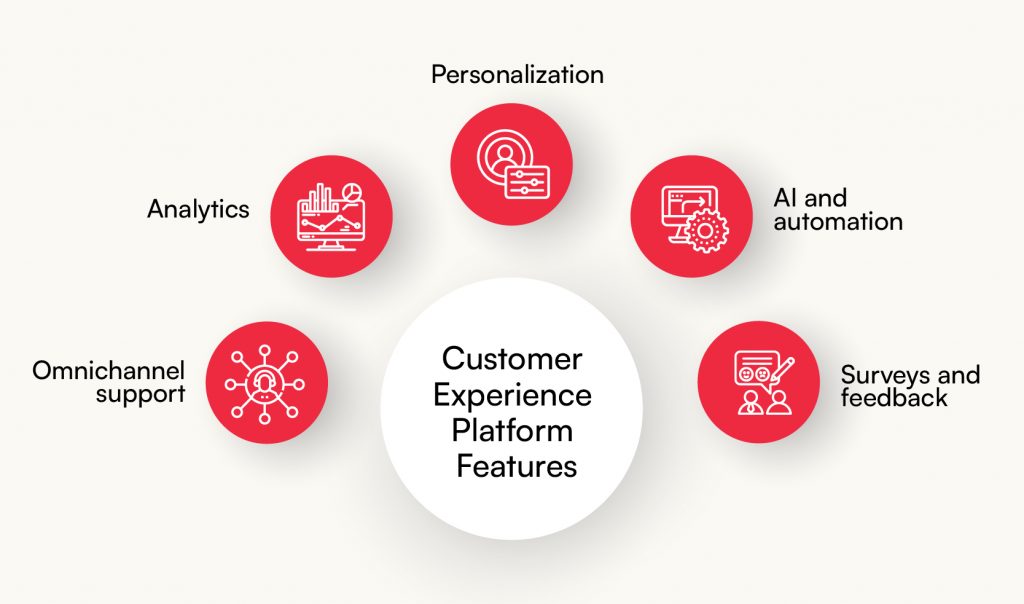
Let’s take a look at these features now:
1. Omnichannel support
Most businesses today operate through several different digital channels. Customers can initiate contact with your brand through social media, SMS, email, applications, websites, or the telephone.
Modern customers expect brands to provide a consistent experience regardless of their channel. They may look up your brand page on Instagram, initiate a product query, and then want to carry forward the checkout to the website.
Such omnichannel experiences are made possible through omnichannel features on customer experience platforms.
Omnichannel support empowers you to track customer conversations from a single, centralized place and provide cohesive and consistent customer experiences. For example, say a customer discovers your brand on YouTube, clicks a promo link to your landing page, but then calls your contact centers to proceed further.
With omnichannel support, your representatives can pick up where the customer left off, and provide assistance with full contextual awareness.
2. Analytics
A reliable CX platform has analytics and reporting tools that process customer data and produce actionable insights. This is crucial for three reasons:
- You get to make data-backed decisions informed by real-time insights on customer preferences and pain points.
- You acquire the bigger picture of the CX strategies performing well and those that need tweaking.
- You can see live workloads on your customer service agents and can allocate resources smartly to deliver a better customer experience.
CX platforms provide customizable dashboards where you can visualize priority metrics and monitor the performance of your CX efforts in real time.
3. Personalization
According to a report by Segment, 89% of business leaders emphasize that personalization will fuel business growth over the next three years. As such, it is important to consider how you would augment your personalization efforts to woo more customers.
Customer experience platforms leverage the power of AI to process vast volumes of customer data to produce insights into their preferences, shopping patterns, spending behaviors, etc.
For example, say a customer on your website likes to purchase a specific brand of coffee beans every 20 days. Your data engines extract this pattern and push it to your AI analysis systems. The AI then suggests an automated offer update to the customer, updating them about deals and discounts on the product.
4. AI and automation
According to a report by HubSpot, 77% of service organizations admit that AI is helping them meet and exceed CX expectations and results. Technological advancement can give your business an edge in the competition, and leveraging it for the benefit of the customers is sure to drive business growth and customer loyalty.
CX platforms powered by AI have the potential to:
- Automate repetitive tasks via Robotic Process Automation, such as customer data entries, ticket management, and HRMS Globex. This will save time and effort for your human workforce.
- Enhance customer experience with real-time assistance through interactive chatbots, virtual assistants, etc.
- Improve employee experience by removing drudgery from daily tasks.
5. Surveys and feedback
Surveys and feedback are an integral part of designing great customer experiences. They let you know—by cohort and percentage—your customers’ expectations in enhancing their experience with your brand.
Customer experience platforms incorporating feedback and survey features empower you to ask your customers directly what they need your brand to do. For example, a customer may require smoother app navigation, while another may ask for better self-service options.
These are direct tasks that you can promptly mobilize your teams to achieve. When customers see immediate action taken through their feedback, you can build a good reputation for your brand.
Different Types Of Customer Experience Management Platforms
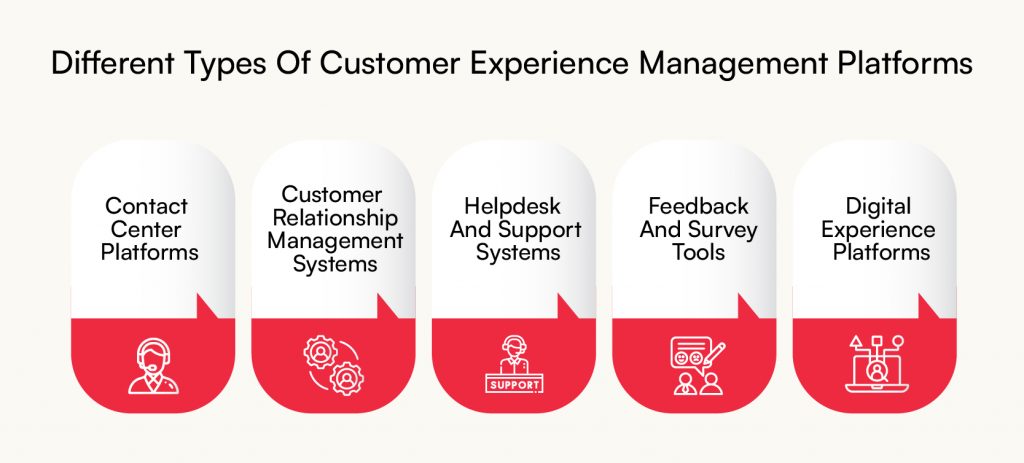
Customer experience software is of different types, depending on what a business prioritizes. There are contact center platforms, helpdesks, automation platforms, etc. that each focus on one specific aspect of customer experience.
Let’s take a look at the major types of customer experience management platforms one by one:
1. Contact Center Platforms
Contact centers are centralized telephone hubs that businesses use to manage their inbound and outbound calls. They are the first place customers reach when they want to resolve an issue, making them crucial for enhancing CX.
CC platforms empower you to:
- Automate call distribution to reduce waiting times.
- Apply IVRs to reduce agent load and provide self-service options to customers.
- Manage omnichannel routing to connect customers with the same service agent regardless of their channel.
2. Customer Relationship Management Systems
CRM systems gather and collate customer interaction data, providing a single source of truth for all customer information. The key functionalities of a CRM are:
- Automation of marketing campaigns to create higher customer engagement through social media posts, advertisements, newsletters, etc. Businesses can even use tools like a Social media post generator to streamline content creation and maintain consistent brand messaging across platforms.
- Manage customer success through key integrations between CRM (Customer Relationship Management) and CCP (Contact Center Platforms), bringing inquiries and feedback in a single place. CRMs pull the interaction data from CCPs and organize it into customer profiles to create a customer context for the serving agent.
- Manage and nurture leads throughout your marketing and sales funnels from end to end.
3. Helpdesk And Support Systems
The helpdesk is the hub from where all the customer support branches out. Helpdesks provide customers with answers to their queries, guidance with troubleshooting, fixing problems, redirecting them to the right department for further assistance, etc.
This system empowers businesses to efficiently manage tickets, support processes and workflows, and more:
- Ticket assignment automation helps with organization, prioritization, and responses to customer queries.
- It helps with creating knowledge bases where customers can access self-service articles and troubleshooting guides.
4. Feedback And Survey Tools
Customer feedback is crucial in designing immersive, engaging experiences for your audience. Dedicated Feedback Software provides you with features like surveys, polls, analytics, and reporting to collect and interpret responses effectively.
There are dedicated tools available online that provide you with several features, such as:
- Customer response management to measure response rates and follow-ups
- Feedback management to automate the analysis of feedback results, extract insights, and organize them into actionable points
- Survey tools that help you distribute brand surveys via emails, web chats, or SMS
5. Digital Experience Platforms
DXPs are special tools that empower you to create, manage, and optimize your brand’s digital experiences across its channels. They also empower you to:
- Manage, create, and publish digital content across various digital channels, such as websites, emails, and social media.
- Collect, analyze, and organize customer data at a centralized location, collected from across all your digital channels.
- Manage your digital assets like text, images, videos, etc.
How To Choose The Best Customer Experience Platform For Your Business?
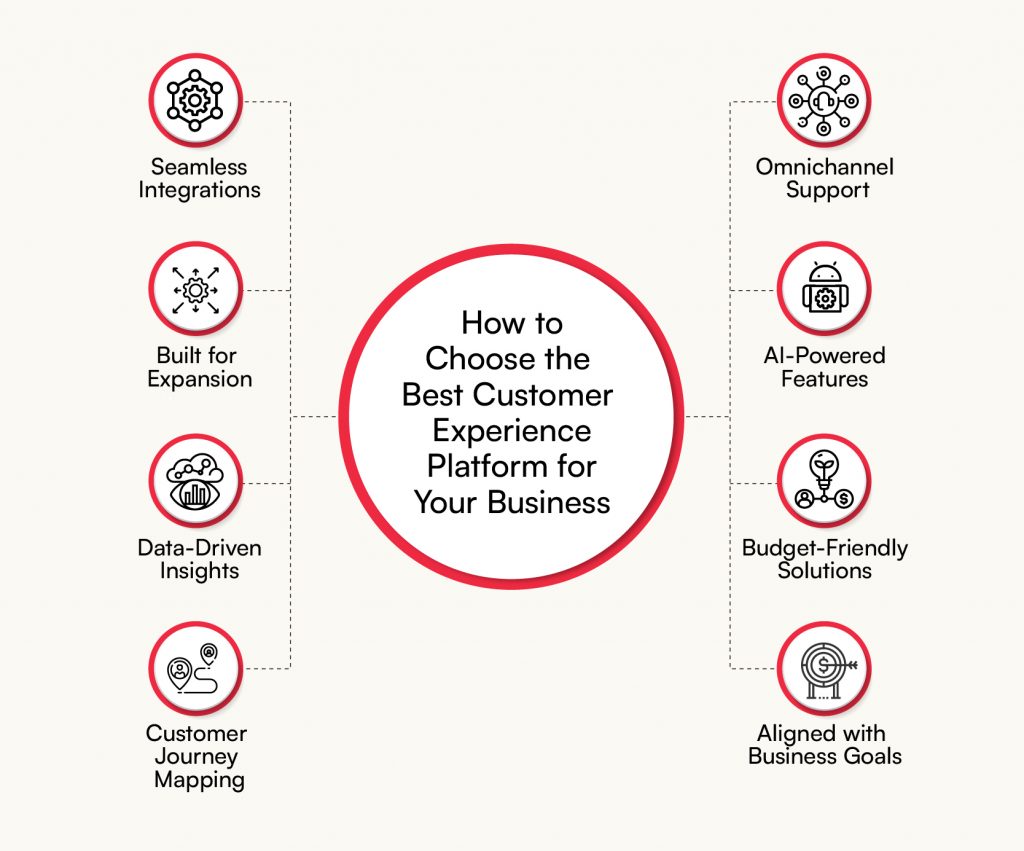
Choosing the right customer experience platform takes some amount of homework. Below are the eight crucial aspects you need to consider to implement the solution that is right for your business:
1. Integration Capabilities
To create truly immersive customer experiences, it is important that the CX platform you select be able to pull data from various other customer-centric systems in your enterprise. This includes communicating with platforms such as CRMs, call center software, analytics software, etc.
Therefore, examining the CX platform’s integration capabilities and requirements is crucial. Look for ready connections to popular CRM tools and an API that enables you to customize your connections.
2. Scalability
Any business requires scalable solutions to grow. When scaling up, invest in customer experience software that grows with you to accommodate the increasing call and query volumes. A good starting point is to check the computing power and storage options available with the CX platform.
It helps you understand how well the software would handle increasing workloads. Additionally, you can check whether it has a microservices architecture that allows for easy scalability if expansion is required.
3. Analytics and Reporting
Measuring the performance of your CX initiatives is crucial to making tangible improvements to your business and its reputation. Analytics capabilities are thus extremely important in a CX platform.
Consider implementing a solution that provides data visualization capabilities and customizable dashboards so that you always have your KPIs readily available at a glance. Also, check the parameters the analytics tool can analyze to understand your data better.
4. Customer Journey Mapping
When a business operates multiple channels, it can get challenging to follow customer journeys and identify bottlenecks.
CX tools gather your customers’ key interactions with the brand, their decisions, emotions, and other factors and map them on a timeline. This creates a customer journey map that gives you actionable insight into which touchpoints are not working or engaging your customers.
Look for a CX platform that allows you to map your customer journeys in a friendly way.
5. Channel Support
Most businesses today have an omnichannel presence. Make a list of the channels through which your business operates. Rate them based on how popular they are with customers and for what purpose (for example, Instagram is for engagement, email is for queries, and so on).
With the list of your most popular channels, look for a CX platform that provides omnichannel support for all these channels. The integrations, features, and functionalities available with the tool should focus on the channels in which your business operates.
6. AI
AI is crucial in the modern business world. It enhances the functionality of your CX platform through automation, advanced analytics, data visualization, reporting, and customer self-service modules.
When selecting, prioritize a platform with robust generative AI for CX. Ask the vendor about the time savings, cost reduction, key metrics, and business outcomes the software can make possible for your business. These figures should be convincing enough to consider investing in the software.
7. Budget
Budget is one of the most important aspects to consider when you invest in any IT solution or new technology. Setting the right budget is tricky; however, you can use a few tricks to determine how useful a software is at the price you pay for it.
Consider your current and future needs. The software’s scalability and flexibility options should align with your business objectives to justify the cost. Additionally, consider the value for money through the usefulness of the features available out of the box.
8. Business Objectives
Your business objectives must align with the capabilities offered by a CX platform. For example, if you aim to create better digital journeys for your customers, a DXP would be the better choice.
Similarly, ensure the platform’s features and functionalities align well with your business goals.
Top 5 Customer Experience Platforms
Based on their capabilities and diverse specialties, listed below are the top 5 customer experience platforms of 2025:
1. KaptureCX
Kapture positions itself as the only AI-powered CX platform designed for large enterprises. It empowers businesses in various industries, such as travel, consumer durables, retail, BFSI, etc., to deliver exemplary customer experiences using a single tool.
Key features
- Customer trust tools: AI-powered self-service to help customers self-navigate their queries. Sentiment analysis to empower agents to provide the right responses. Omnichannel support to deliver seamless, cross-channel experiences to customers.
- Empowering agents: Intelligent agent assistance with GenAI, customer 360° view across all channels, and knowledge management.
- Add Value to Your Customer’s Experience: With Kapture, you get a 30% enhancement in first-call resolution, a 28% reduction in average handling time, a 30% improvement in CSAT, and a 30% reduction in average resolution time.
Contact sales today to book your demonstration and understand the plans and pricing.
2. Adobe Experience Manager
Adobe Experience Manager is a content management system that helps you manage your digital assets well. Use this platform to deliver the right content to your customers at the most reasonable time.
Key features/products
- Content Management System: Create, optimize, deliver, and manage key digital content across all your channels.
- Digital Asset Management: Automate your digital asset management. Source, adapt, and deliver digital assets efficiently to audiences and across channels.
- Learning manager: Customer engagement, partner training, LMS (Learning Management System) to consolidate learning and training materials for easy access and dissemination across your organization.
- Digital enrolment and forms: Create end-to-end digital forms for secure e-sign.
3. Contentsquare
Contentsquare specializes in digital experience analysis. This platform is a good choice for measuring the performance of your CX initiatives.
Key features
- Zone-based heatmaps: Advanced experience and revenue attribution, vis-à-vis analysis in a single view, visualization of user interactions.
- Journey analysis: 360° customer view, intuitive customer journey mapping, reverse digital journeys, entry-to-exit journey visualization.
- Impact quantification: top-down, bottom-up quantification, sequential behavior segmentation, quantification of business impact.
- AI: ML and data science to extract insights through the Contentsquare Experience Intelligence platform.
- Session replay: Capture 100% user experience and replay triggered events.
4. Qualtrics XM
Qualtrics XM platform is an experience management platform that allows you to collect, understand, and take action on customer experience data. Use this platform to know what customers are saying about your brand.
Key features
- Web and mobile feedback: Enhance cross-channel CX by collating feedback from all channels.
- DX Analytics: Optimize customer digital experiences with session replay and behavior analytics.
- Journey optimization: Fix drop-off points and identify friction areas for journey optimization.
5. Acoustic Tealeaf
Tealeaf by Acoustic is a complete customer experience analysis platform that allows you to see how customers interact with your channels. Use this platform to understand how customers use your channels and interact with their elements.
Key features
- Digital journey analysis: Understand the customer intent better by analyzing how they use your channels.
- Heatmaps and interaction analysis: Explore user behavior, content interactions, and challenges on any page.
- Session replay: See each journey from the customer’s perspective and gain real-time insight into their experience.
Why Kapture CX Is The Preferred Customer Experience Platform For Enterprises?
Customer experience is not a linear aspect that you can put on a timeline and track—it is a branching behavior that depends on various elements of your channels.
To fully understand why customers are staying or leaving your channels, you need a comprehensive toolset that combines experience analytics and performance monitoring, captures customer viewpoints, and delivers seamless integrations.
KaptureCX, powered by a robust AI engine, packages all these necessities in an easy-to-use bundle of useful features and actionable insight.
- Omnichannel support: Kapture supports all digital channels to power your CX, including email, SMS, chat, phone, and social media.
- AI-powered automation: Use Kapture to automate routine tasks such as tickets, self-service options, personalization of responses, and more.
- Holistic customer view: Kapture centralizes customer information on a single database, making it possible to build 360° customer views for better understanding.
- Advanced analytics: Use Kapture’s AI-powered analytics to identify trends, analyze customer interactions, optimize your CX strategies, and more.
- Seamless integration: Kapture seamlessly integrates with popular enterprise systems like CRMs, helpdesks, and other business applications, making your work easier.
- Scalable solutions: Use customizable workflows and configurations to make Kapture work according to your suitability.
Explore more capabilities of Kapture CX that make it possible for you to design exemplary customer experiences effectively.
Summing Up
According to reports, 90% of CX leaders admit that they don’t know where to start when it comes to enhancing customer journeys and experiences. In such situations, identifying your business objectives and getting the right customer experience platform is a good launchpad for beginning your CX journey.
Personalizing your customer experience is crucial for customer retention, and Kapture CX is a great option here. With them, you get AI-powered customer help that smoothly guides customers through their experience with your brand.
Request a demo with Kapture CX to see how it works!
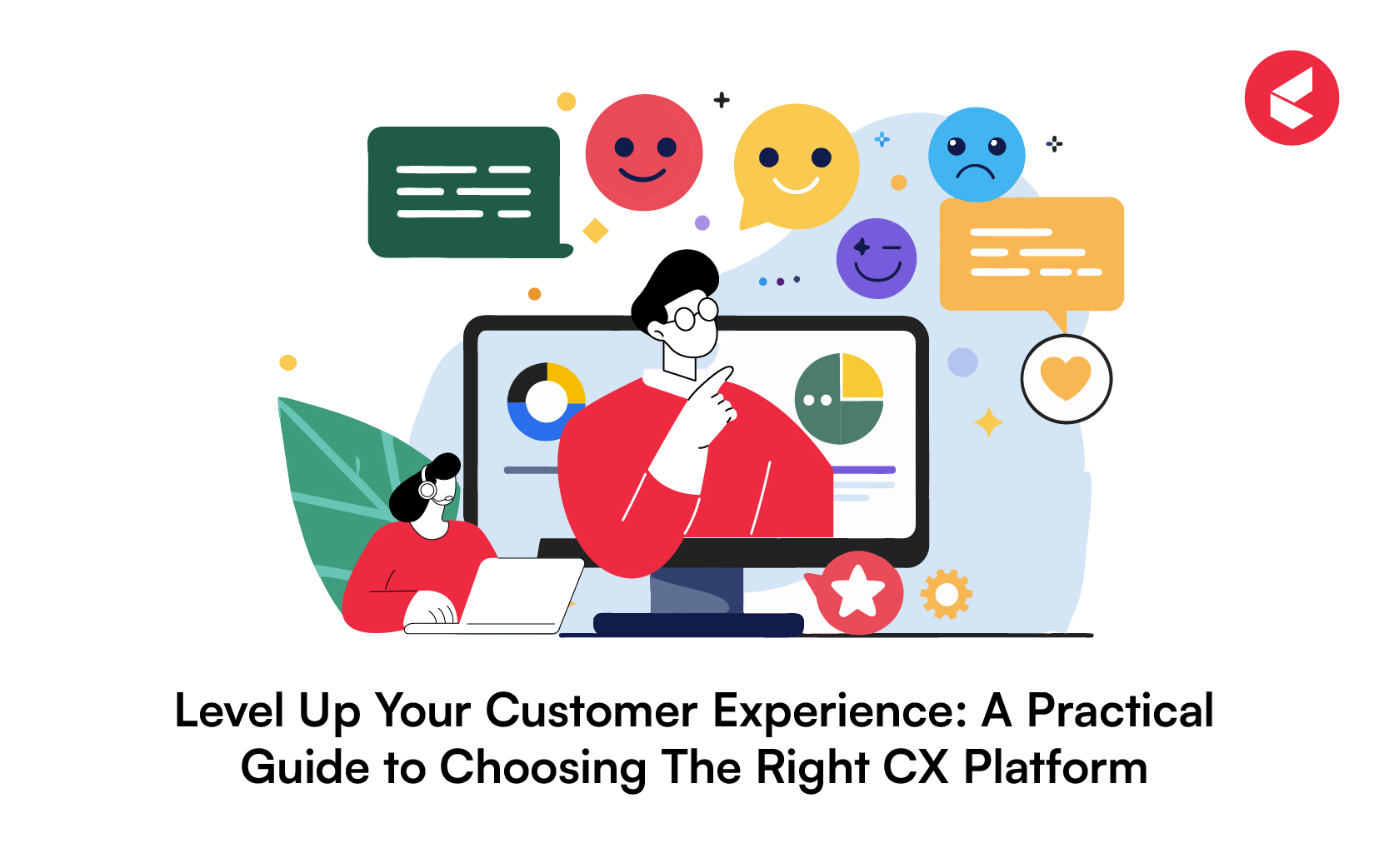


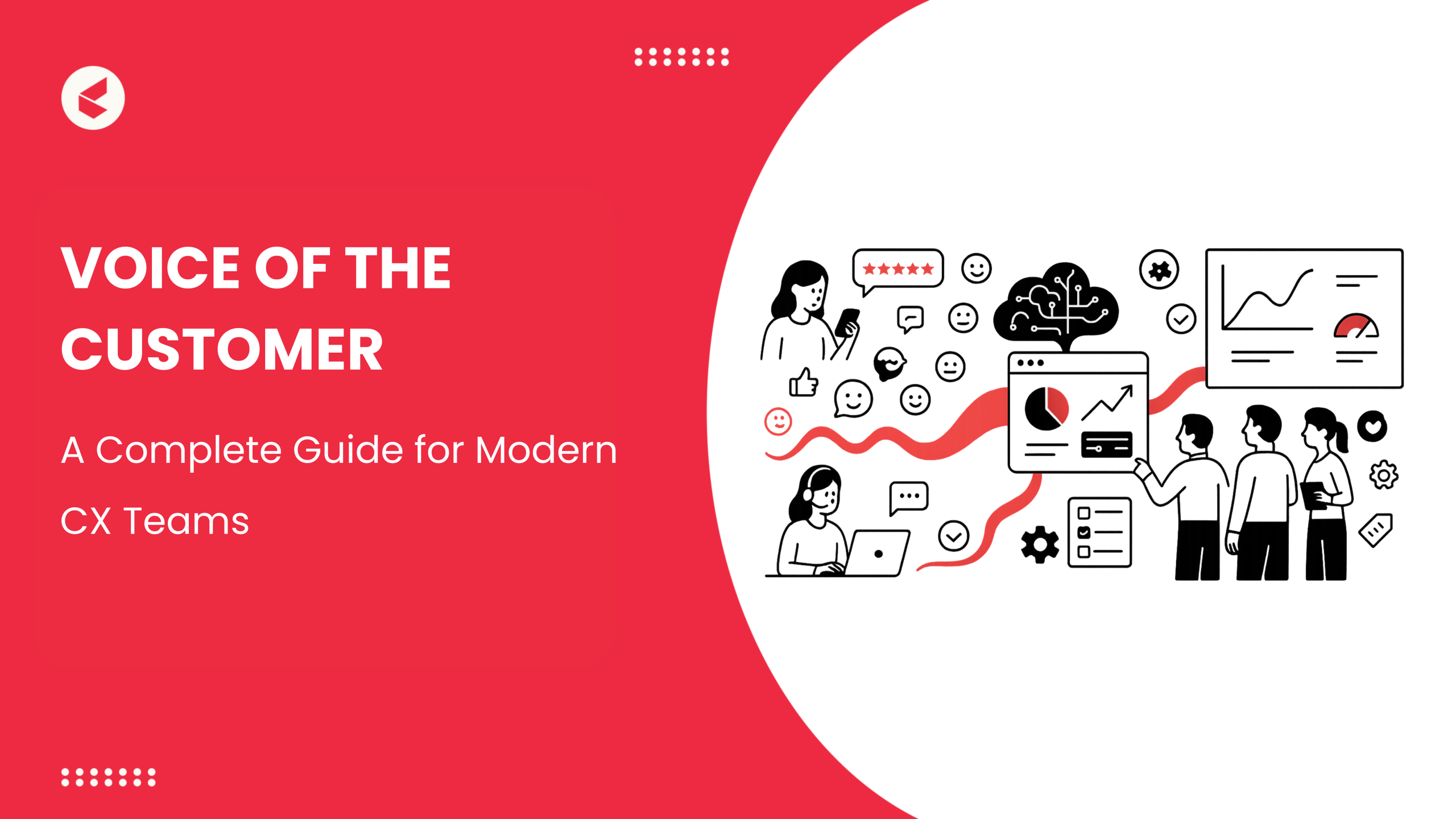
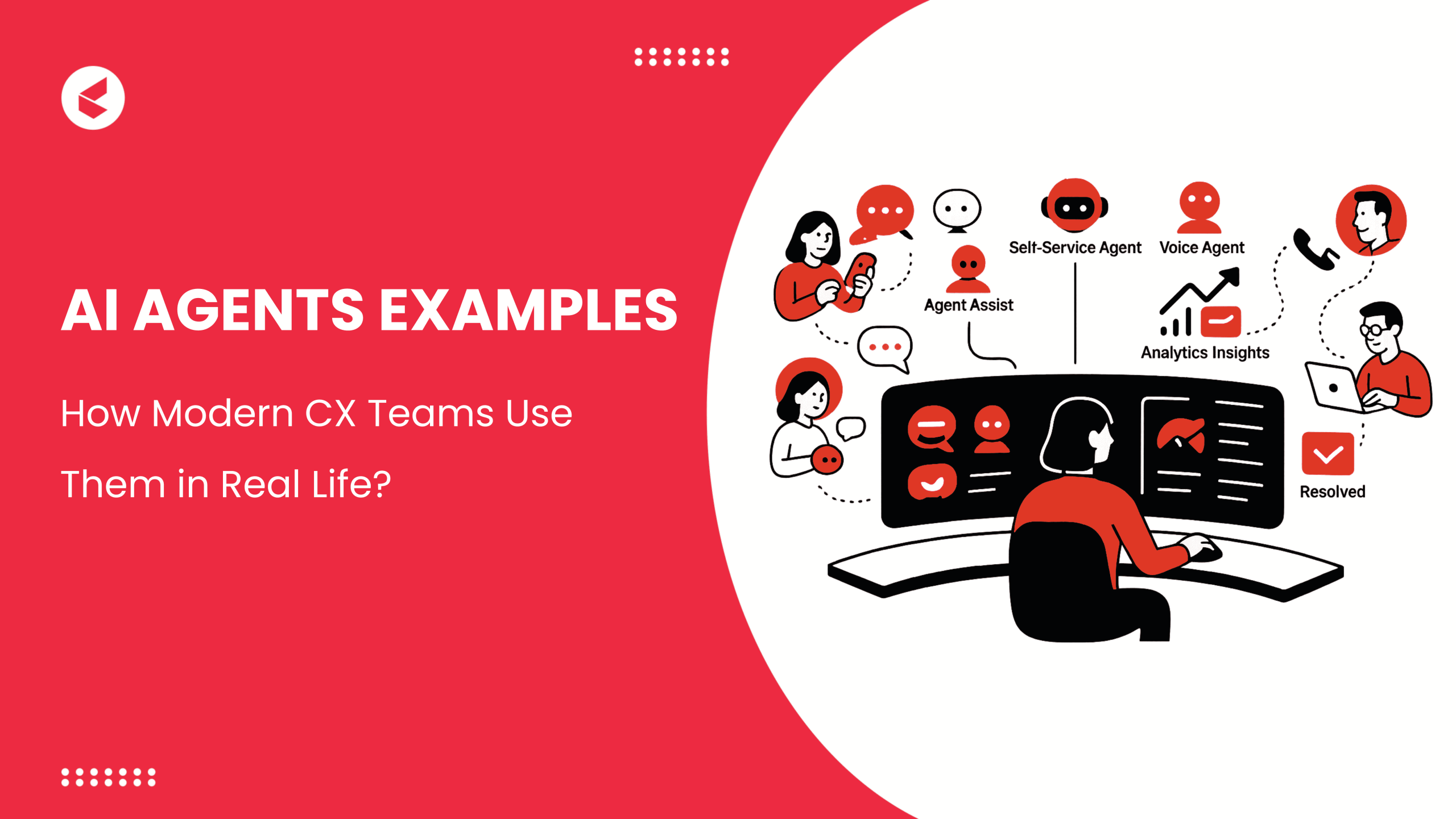









One thought on “What is a Customer Experience Platform ? A Practical Guide to Choosing The Right Tool”
Comments are closed.